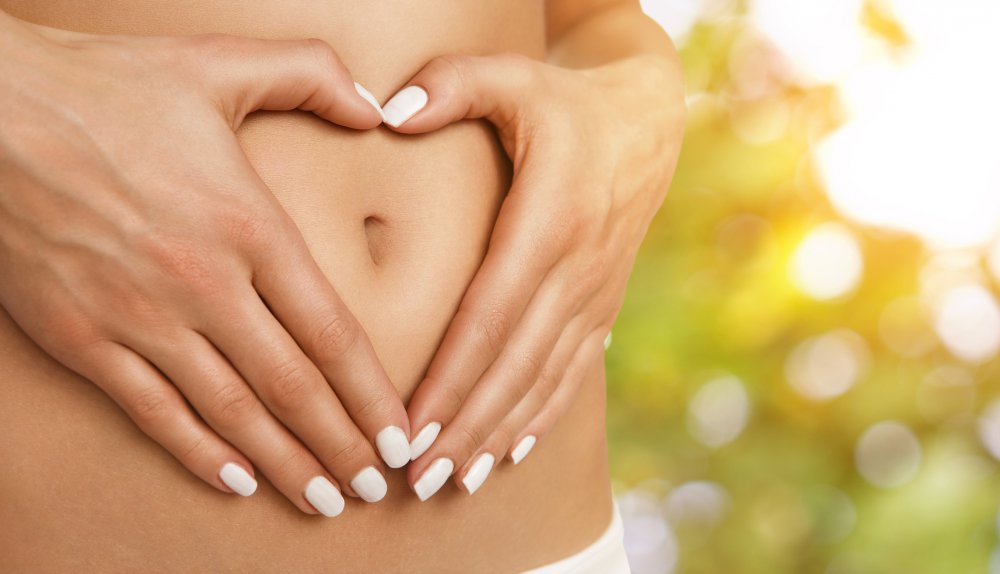Stress, travel, diet change, many factors can explain bloating and swollen belly. To get rid of it permanently, we go for foods rich in fiber and digestive enzymes .
Gestures to avoid to have a flat stomach
Of course, some "rules" are to be followed such as not skipping meals or limiting soft drinks . Food that is too fat or fried, but also alcohol and tobacco can ruin all our efforts. Finally, we do not forget to hydrate , it is essential! Between 1.5 and 2 liters of liquid a day: water, herbal tea, tea etc. You are told everything about fruits and vegetables to be preferred to have a flat stomach.
What fruits to consume for a flat stomach?
- The pear, perfect for digestion
On a nutritional level, the pear is rich in water , hence the saying "keep a pear for thirst". Its calorific value depends on its sugar content and the variety (50 to 70 Kcal / 100g). Pear is characterized by its high fiber content (2.3g per 100g of fruit), and minerals such as potassium. Like pineapple, the pear contains mostly insoluble dietary fiber : cellulose and hemicellulose, which accelerate intestinal transit. It is advisable to eat the skin of the pear , richer in fiber than the flesh. Choose melting pears. Their fibers are better tolerated by the body , especially in people with a delicate digestive system.
- Papaya, low in calories
Thanks to the presence of fibers and an enzyme "papain", this highly digestible fruit facilitates digestion. Papaya is a low-calorie fruit (40 kcal / 100g), almost half as sweet (10g / 100g fruit) as mango and close to melon. It is rich in vitamin C and carotene , a powerful antioxidant. The papaya is a source of dietary fiber (2.7g of fiber for half a fruit) and thus has a satiating effect.
- The apple, to eliminate food residues
The apple is full of pectin , a dietary fiber that promotes the elimination of food residues and stimulates the activity of the digestive tract. Thus, an apple of any type of average size and its skin contain 3 to 4g of dietary fiber. The skin contains 5 times more vitamin C than the flesh. Better to crunch a raw whole apple to optimize the action of the fibers than to drink an industrial apple juice, low in fiber. Nutritionally, the apple is an ideal fruit for the diet . It is low in calories (54 kcal / 100g), low in fat, rich in minerals (magnesium, calcium) and trace elements (zinc, selenium). According to some studies, apple consumption could reduce cardiovascular disease mortality thanks to its anti-cholesterol action. Its mechanism remains uncertain. It talks about the action of soluble fiber, pectin and flavoloids (source of antioxidants). The apple has a diuretic effect. But beware: Cooked , it can become constipating.
- Pineapple, to stimulate the intestine
Pineapple contains insoluble dietary fiber such as cellulose or hemicellulose at a rate of 1.4g per 100g of fruit. These fibers help fight against intestinal laziness. The energy intake of this fruit is moderate (50 kcal / 100g, which is as much as the apple). Note the contribution of minerals (potassium, iron) and vitamins of groups B and C. Pineapple also help good intestinal transit thanks to its bromelin content. This enzyme accelerates the absorption of dietary proteins (meat, fish, eggs, dairy products and vegetable proteins) by the body.
Prefer fresh pineapple. Be careful, bromelain is destroyed by heat during canning or reduction in industrial juices. There is controversy about this enzyme. It seems that it is present only in the stem of the pineapple, which is not edible.
And salty side?
- Whole bread, to promote transit
If in a general way the traditional bread, stuffed with starch, tends to swell the belly, we prefer to turn to bread wholemeal. Rich in fiber and cereals , it helps our intestines and facilitates transit. In 100g of wholemeal bread, we find 8g of fiber , which makes it one of the main sources of fiber of our daily diet .
- Artichoke to eliminate toxins
Rich in fiber and potassium, the artichoke will help us to "detoxify" the intestine , and will facilitate digestion. There is 5g of fiber in a portion of 100g. Raw or cooked can matter, but note that the artichoke can also help eliminate the feeling of heavy leg . For a little variation, we can also turn to other high-fiber vegetables such as asparagus, green beans, carrots and so on. If our vegetables are organic, we peel them at least because it is in the skin that we find the most fiber .
- Lenses, to trap fat
Cooked lentils are our best friends to fight against fats, rich in fiber and slow sugar , they help us eliminate fats, we are completely satisfied for the rest of the day. A good way to avoid small snacks . It also promotes digestion and transit, a key point for having a flat stomach. Lentils are part of the family of legumes, so we can vary with chickpeas, white and red beans, peas etc, but be careful, when cooking, they tend to lose their fiber content. In a portion of cooked lentils, there is approximately 4g of fibers.
- Oilseeds, to nibble without taking a gram
We go slowly with oilseeds that are not always our allies: eaten in too large quantities, they can make us gain weight because they are full of calories. But oilseeds are full of other nutritional resources. Rich in omega 3 and fiber , they will give us energy for the whole day and help fight constipation. So we limit our consumption, and we avoid buying them salty on pain of fattening. But when you have a little hollow, we do not stop to nibble some nuts, almonds, hazelnuts, or put some in our morning bowl .
More information in the book "Slimming Foods, Lose weight with 100% natural foods" by Dr. Laurence Lévy Dutel and Florence Sabas, published by Eyrolles, € 5.90



